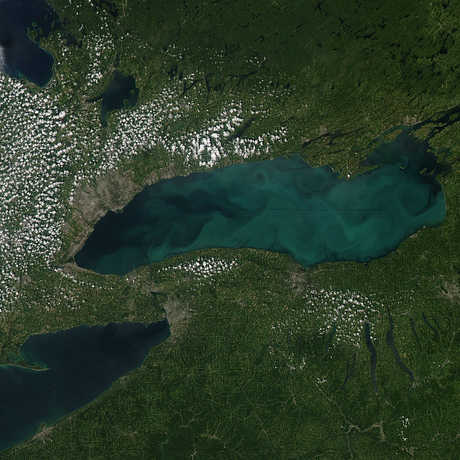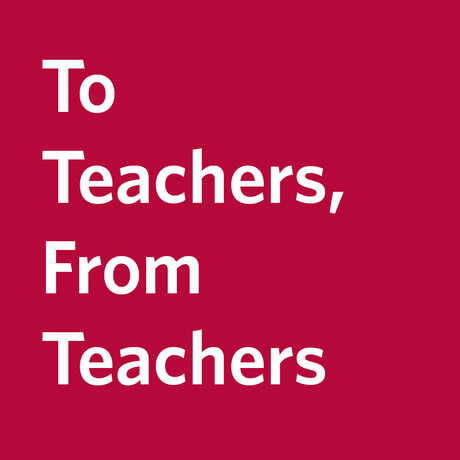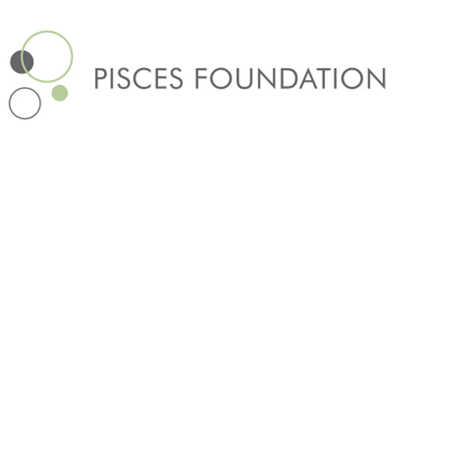Browse a rich array of educational resources from the award-winning show, Habitat Earth.
- What is carbon absorption a measure of?
- How do plants respond to seasonal changes in sunlight?
- Which areas of our planet are most productive, and why?
Witness the influence of the sun on the seasonal abundance of plant matter produced on land and in our oceans.

Photosynthesis Seen From Space (grades 6-11)
Observations inspire scientific questions and drive discoveries. In this activity, students will watch a visualization of empirical scientific data to explore seasonal changes in primary productivity on the Earth. They will then formulate and research their own scientific questions about primary productivity on the earth and present their research in a classroom scientific poster session.
Next Generation Science Standards Disciplinary Core Ideas
California's Environmental Principles and Concepts

"We will be looking at food webs this year, so all the information about photosynthesis and the food chain are great supplemental materials to our curriculum."
-3rd-5th Grade Science Teacher from San Rafael, CA
"I would use the Timelapse of Photosynthesis from Space as an assessment of students' understanding of photosynthesis inputs and outputs." -Middle School Life Science Teacher from Pleasant Hill, CA
"I showed the entire Habitat Earth film as a virtual field trip at the end of our cell energy unit. I specifically asked students to write down what was familiar about photosynthesis and what (if any) questions they had. Additionally, I showed the time lapse video and had the students guess what was going on/what time of year it was at each point in the time lapse (as the activity for that lesson suggested.)"
-Middle School Life Science Teacher from Vallejo, CA
"I will be using the timelapse photosynthesis with our climate unit, because it is an excellent visualization tool."
-High School Earth and Space Science Teacher from Portland, OR
"The short videos of photosynthesis from space and bird migrations overlaying photosynthesis, and the water transport videos will be great hook activities for my cell energetics lessons. I appreciate that there isn't any narration, allowing the students to watch and draw their own conclusions. Great for developing critical thinking!"
-High School Life and Environmental Science Teacher from San Rafael, CA
"I suggested the photosynthesis from space video as a phenomenon to base a photosynthesis lesson on for NGSS implementation work I am doing with other science teachers."
-High School Life Science Teacher from San Lorenzo, CA
Have an idea you'd like us to post on this page? Email us.
Visualizations based on aggregated data provide the unique opportunity to engage your students in various Science Practices highlighted in the Next Generation Science Standards, including asking questions, analyzing and interpreting data, and constructing explanations. As an example, Academy educators developed sample activities such as this one and this one.
Using Empirical Data in the Classroom (grades 6-10)
Why do birds migrate? How do seasonal changes in primary productivity influence the behaviors of higher order consumers like raptors? Visualize and explore the connectedness of organisms within and across ecosystems in this teacher-guided activity.
Seasons of Change (grades 6-12)
Is there a plant near your house or school that produces beautiful flowers in the spring, or a tree whose leaves change to striking colors in the fall? Do you think those flowers blooming or color change happens on the same day every year? By becoming a citizen scientist through Project BudBurst, you’ll investigate questions just like those and will help scientists answer big questions about plants, seasons, and climate change!
Phytoplankton Blooms
How do phytoplankton blooms affect ecosystems? Learn what causes these potentially toxic blooms and how scientists monitor them to ensure food safety.
Photosynthesis Colors
Discover the power of photosynthesis - a seemingly magical process by which plants, algae, and some microbes capture sunlight and turn it into usable energy.
Improving Photosynthesis
Cutting-edge research is trying to improve upon the photosynthetic process to solve future global issues like food shortages and cleaner, renewable fuels.
A Plant-Filled Planet
This science news article summarizes the tremendous impact plants have had on our planet for hundreds of millions of years.
Ocean Productivity
Michael Behrenfeld
Land Productivity
NASA MODIS
Browse a rich array of educational resources from the award-winning show, Habitat Earth.
Learn the benefit of using videos in the classroom, and browse resources to help you get started.
Our collection of educational videos will help your students visualize data and understand scientific concepts.
Environmental Literacy Initiative, major funding provided by
